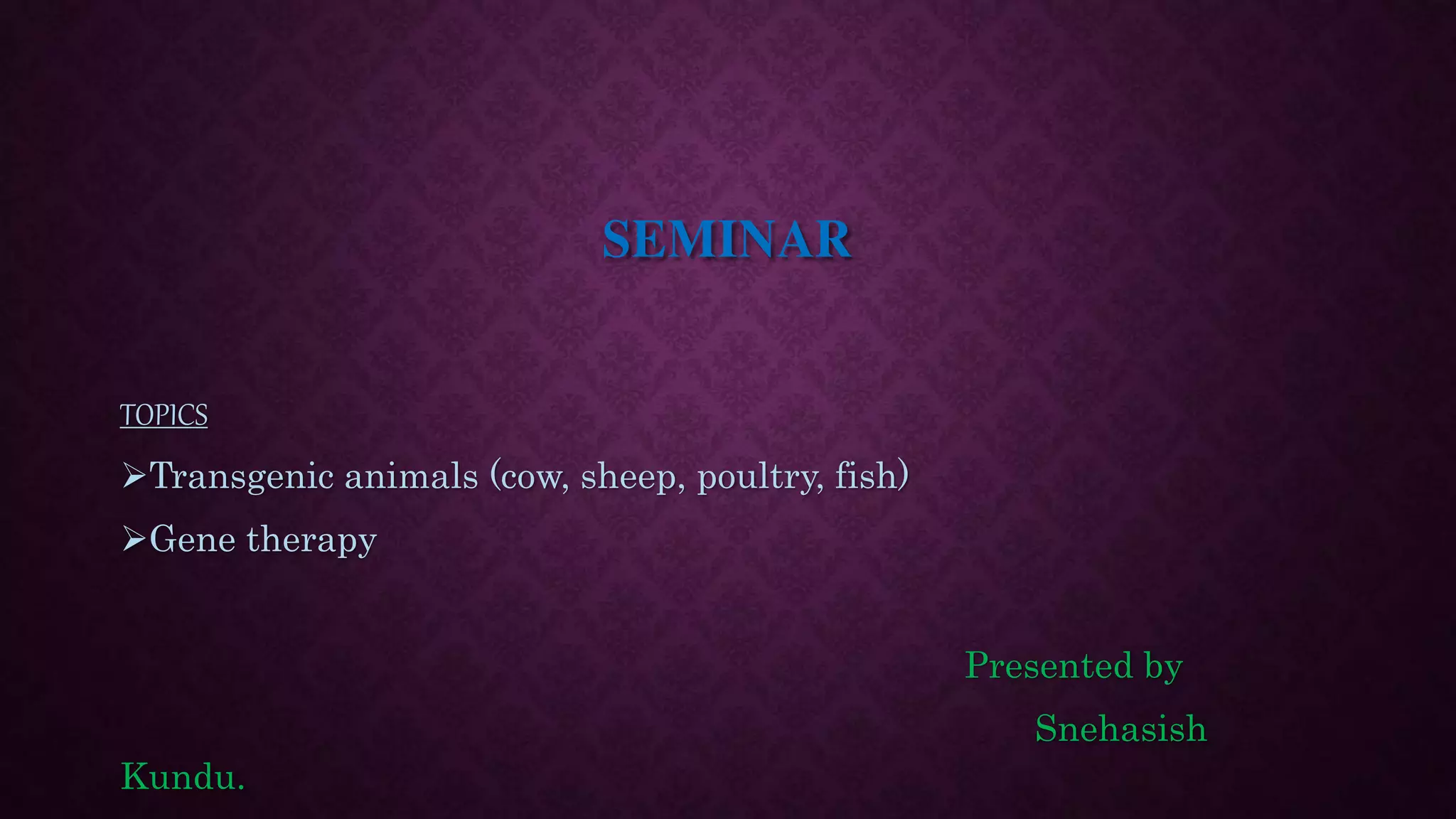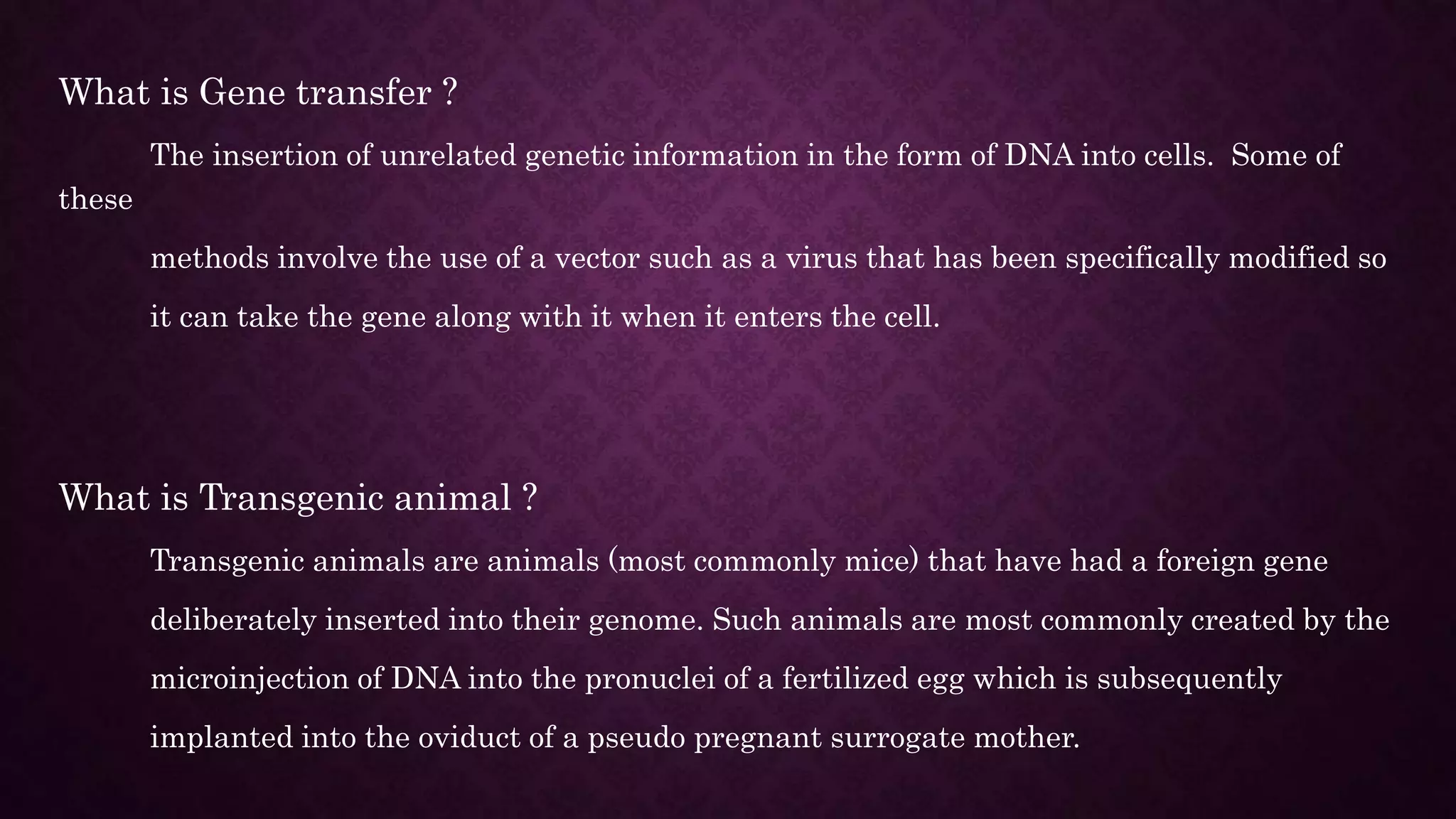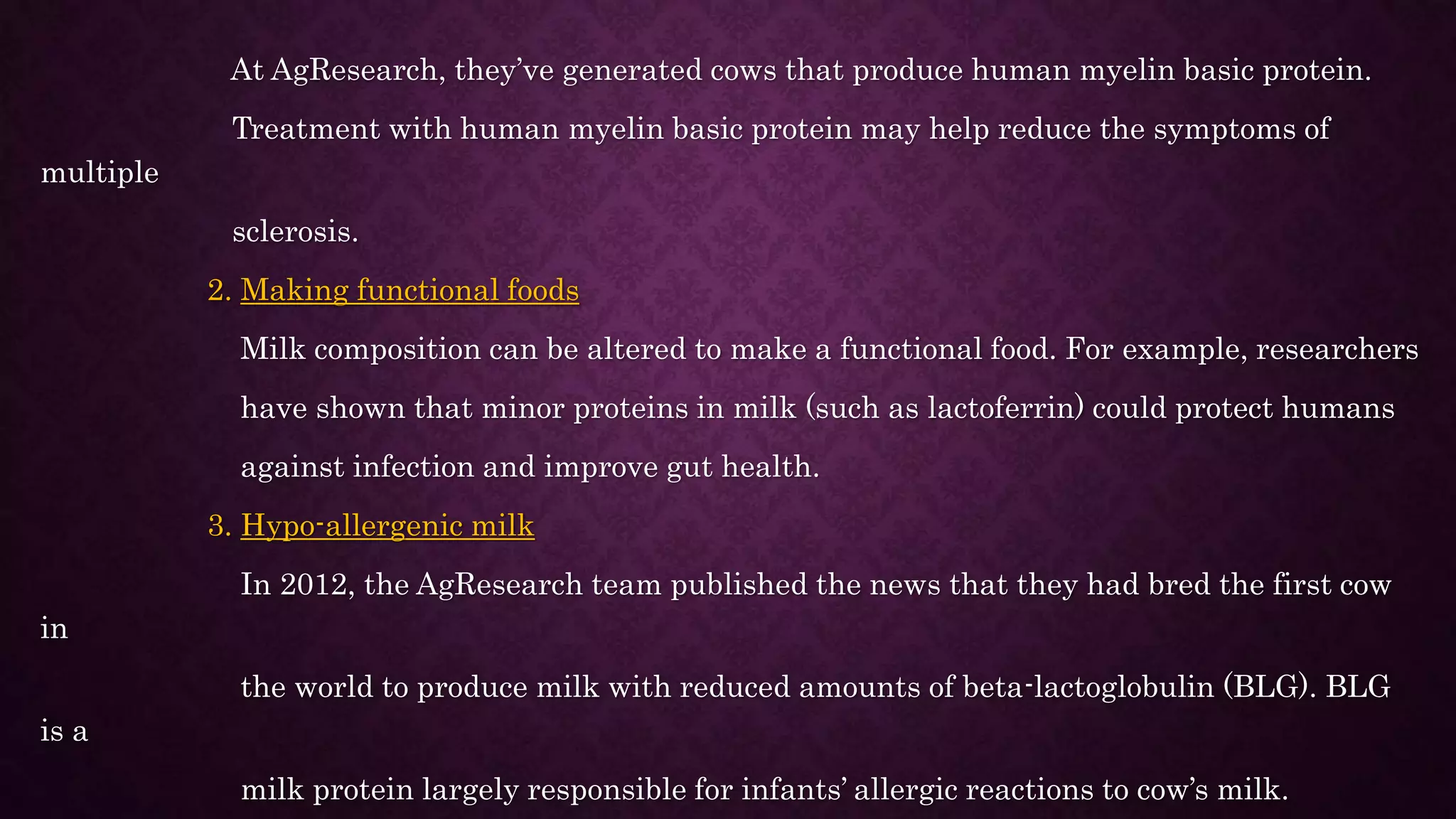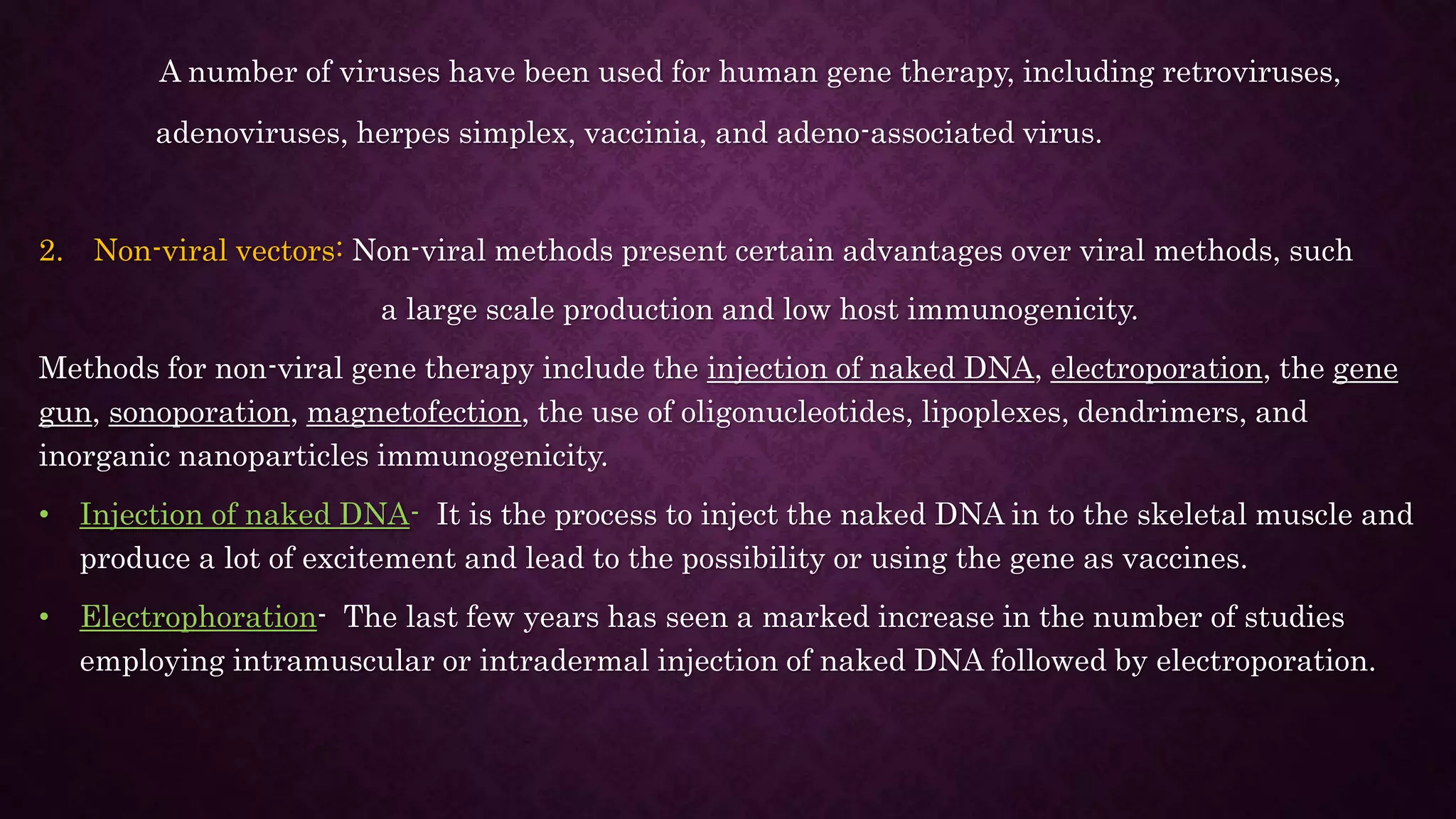The document summarizes topics related to transgenic animals and gene therapy. It discusses transgenic cows, sheep, poultry, and fish. For each animal, it describes the process used to create transgenic versions, including pronuclear microinjection and somatic cell nuclear transfer. Benefits include producing human therapeutic proteins and altering milk composition. Challenges include high costs and low success rates. Gene therapy techniques like viral vectors and electroporation are explained for inserting genes into tissues to treat disease. Somatic gene therapy aims to modify individual patients while germline gene therapy alters heritable genes passed to offspring.




















